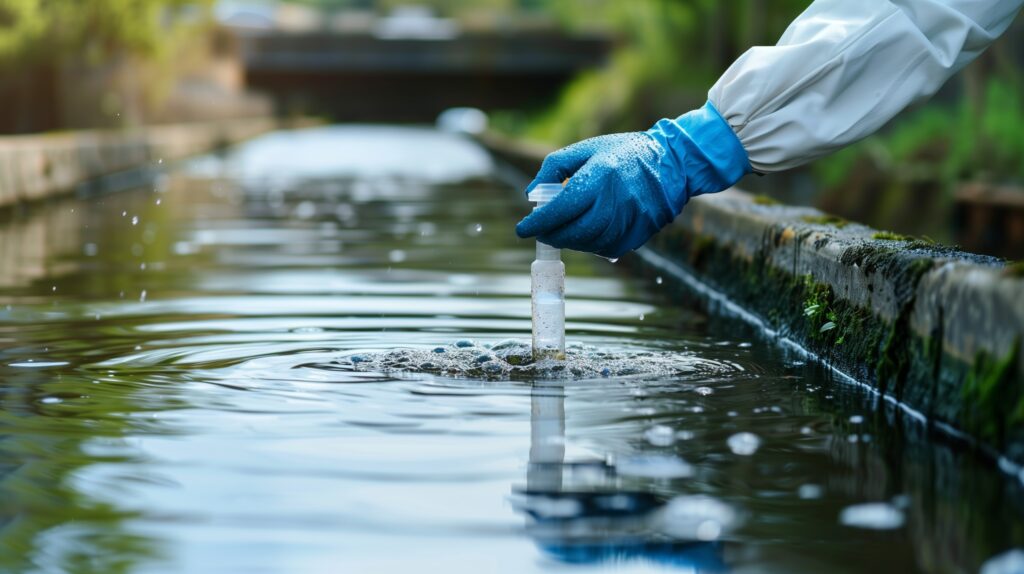The new EPA drinking water standards for PFAS are a regulatory milestone in addressing the pervasive presence of forever chemicals in our water supply. They set stringent limits and introduce rigorous monitoring requirements to reduce exposure to harmful PFAS and ensure cleaner water for communities nationwide.
Implementing the standards, however, presents significant challenges. These include the technical hurdles of detection, selective separation, and PFAS destruction. But they also include bridging the gap between policy and reality for water utilities, regulators, consumers and others.

Explaining the new drinking water standards for PFAS
The final rule establishes legally enforceable Maximum Contaminant Levels (MCLs) for several types of PFAS. These MCLs, which occur individually and as mixtures in drinking water, vary by type of PFAS.
For perfluorooctanoic acid (PFOA) and perfluorooctanesulfonic acid (PFOS), the EPA has set enforceable MCLs at 4.0 parts per trillion, which will reduce exposure in drinking water to the lowest levels feasible for effective implementation.
Considered legacy PFAS, PFOA, and PFOS are long-chain compounds that have been phased out of manufacturing under the Toxic Substances Control Act. The agency has also set a non-enforceable MCL goal of zero for these two PFAS, a standard based on recent research indicating that there is no level of exposure without risk to human health.
For other types of PFAS—including PFNA, PFHxS, and HFPO-DA—the EPA has set MCLs of 10 parts per trillion (ppt). To put these numbers in perspective, reducing levels to 10 ppt is like removing ten grains of sand from an Olympic-sized swimming pool. Additionally, the final rule contains a Hazard Index limit for mixtures containing two or more PFAS, not including PFOA and PFOS.
Timelines for enforcement
EPA drinking water standards requires water utilities across the United States to monitor and report PFAS conditions in the potable water supply within three years and take remedial action if required to address compliance within five years. As with most regulatory standards, NPDWR comes with progressive implementation timelines.
By 2027, water systems must complete initial monitoring. By 2029, regular compliance monitoring must begin and be included in annual water quality reports, and consumers must receive public notification of monitoring and testing violations. And, starting in 2029, water systems must comply with all MCLs and issue public notification for MCL violations.

Easing the burden on utilities
Public water systems and water utilities are on the front lines when it comes to meeting these stringent new drinking water standards. The gap between regulatory aspirations and utilities’ current capabilities is significant, from conducting compliance monitoring to reducing regulated PFAS levels and communicating with the public.
The final rule is flexible, allowing water systems to determine the best ways to remove contaminants. The Bipartisan Infrastructure Bill (BIL) has also dedicated $9 billion specifically to invest in communities with PFAS-contaminated drinking water.
Yet even with allocated funding, water utilities face an undue burden as they strive to meet the stringent new limits. These utilities are tasked with remediation, monitoring and compliance for chemicals that they did not introduce into the environment. Successfully separating, reducing and remediating PFAS will require costly upgrades to infrastructure and advanced treatment technologies.
“There are reasonable standards to work toward attaining,” said Dr. Linda Lee, a distinguished professor at Purdue University with a joint appointment in the College of Agriculture and College of Engineering. Dr. Lee is an R&D project lead for Great Lakes ReNEW and has two decades of experience working on PFAS. “These types of PFAS are among those that have been studied and discussed the most. The rule is a good start and will propagate more studies and regulation to come.”
Dr. Lee pointed out that Great Lakes ReNEW has a critical role to play over the next three years. “We need to be working really hard to develop scalable treatment technologies. Drinking water will be a big driver at first, but other regulations are sure to follow.”
Future regulations may address effluent, or wastewater that flows directly into lake or river surface waters, and treatment of PFAS-contaminated wastewater solids.
“Tackling complex problems like PFAS really does take a village,” said Alaina Harkness, executive director of Current and CEO of Great Lakes ReNEW. “The true power of ReNEW is our coalition. With over 50 partners across six states, we have some of the brightest minds in water innovation working to turn research into practice. This includes on the cutting edge of PFAS separation and destruction.”
For more, read the full Final PFAS National Primary Drinking Water Regulation from the EPA.
Interested in getting involved with Great Lakes ReNEW? Contact Us.
Note: This material is based upon work supported by the National Science Foundation under Cooperative Agreement No. 2315268





